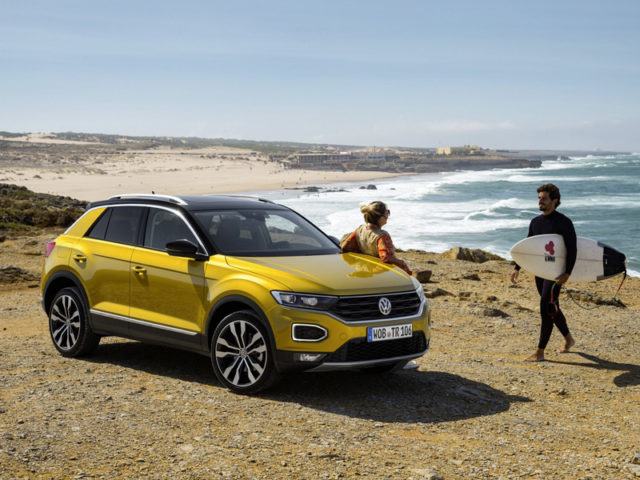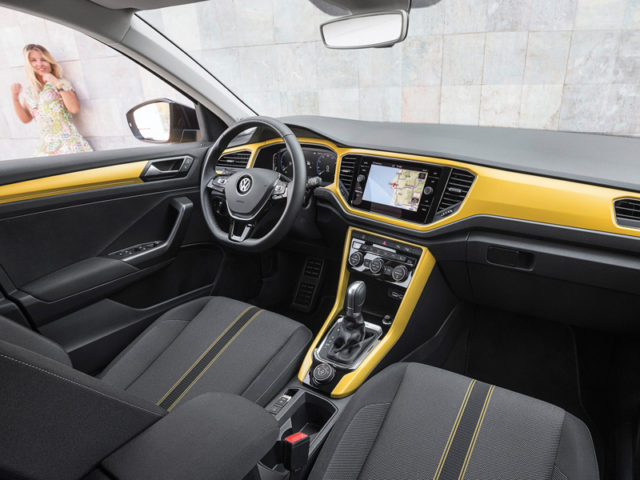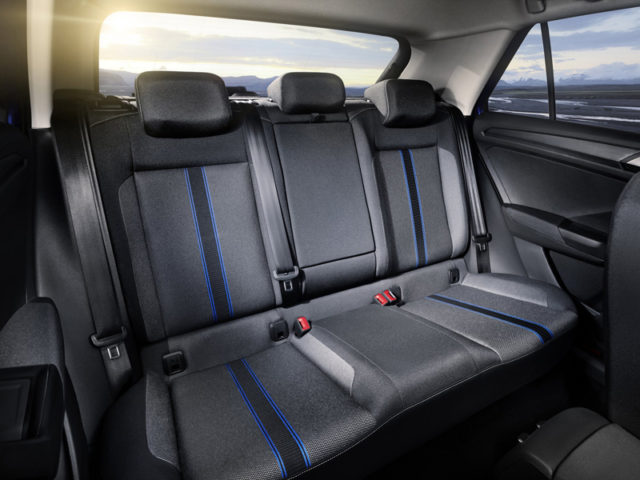First Drive: Volkswagen T-Roc
Volkswagen has big plans for its compact crossover, says Alex Grant.
SECTOR Crossover PRICE €20,390-€32,000 FUEL 5.1-6.7l/100km CO2 117-133g/km
For Volkswagen, the T-Roc is a sign of the times. Not only because it’s taking the newly-discontinued Scirocco’s space on the production line in Portugal, but also as it’s expected to become one of the brand’s biggest-selling models, with the potential to outsell fleet stalwarts such as the Passat. Hints of a seemingly unending appetite for crossovers.
Bigger than a Juke, but smaller than a Qashqai, this is a component of what will be a 19-model Volkswagen SUV line-up within a few years. In Europe it’s positioned below the Tiguan, which got bigger in its latest generation, but it’s bigger than cars such as the Renault Captur, leaving space for the Polo-based T-Cross crossover, which is due next year. Platform shared and almost indentical in size to an Audi Q2 – with which it has the potential to compete head-on – it’s a threat to the Toyota C-HR, Honda HR-V and Mini Countryman too.
Consumers might have fallen out of love for coupés, but the T-Roc is still focused on kerbside appeal. The full range won’t be available until early next year, but will offer a choice of versions tuned towards bright colours and two-tone paint, or R-Line with its large wheels and sportier styling. Volkswagen will offer a gasoline and diesel engine at 115hp, 150hp and 190hp, with four-wheel drive available on the two more powerful diesels, and the range-topping gasoline version.
The expected biggest-seller, the 115hp 1.0-litre TSI, wasn’t available to drive at the launch, and neither was the 1.6 TDI at the same power level. However, other Group cars with the same platform suggest the former will be more appealing to drive, while CO2 emissions of 117g/km are likely to be close to the as-yet-unavailable diesel. The 150hp 1.5 TSI, at 5.3l/100km and 121g/km CO2, could make sense for some fleets too.
But the 150hp 2.0-litre TDI offered for early drives bodes well; it’s lost little of the Golf’s sure-footedness despite the raised ride height, and that isn’t as a result of heavily-sprung suspension to keep body roll in check. All versions also include a multi-link rear axle, which deals better with bumpier surfaces than the simpler setup used on some entry-level versions of the Golf. Likewise, relatively long wheelbase offers plenty of head and legroom for all occupants, and the windowline isn’t swept up to restrict the view for those sat in the back; features a coupé can’t match.
However, even colour accents, an optional digital instrument cluster and the excellent high-resolution infotainment system can’t distract from the abundance of shiny, hard plastics inside. It’s not up to Volkswagen’s usual high standards, nor the price bracket this car is positioned in. Even the cheaper Polo feels more premium than the T-Roc.
Not that it’s likely to dissuade buyers. The T-Roc has the Golf’s strong points without its ubiquity, and some of the Scirocco’s sporty styling without the impracticality of a coupé. It’s not hard to see why consumer demand for products like this is showing no sign of slowing down.
What we think
It’s joining, rather than redefining, a segment, but the T-Roc is a safe bet for Volkswagen, offering badge cachet and a Golf-like driving experience in a booming sector.





